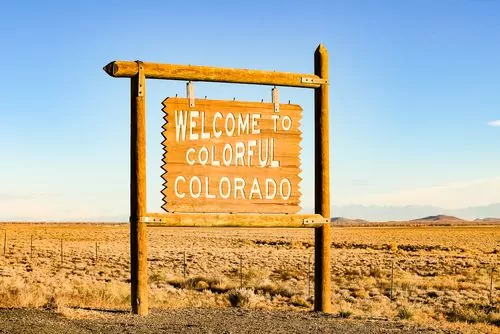If you’re like most drivers, you probably take to the roads at least five days per week. But do you really know the rules of the road? Whether you’re driving to work, into the next city, or to the other side of the country, the laws differ. Your familiarity with the laws gives you insight into what other drivers will do.
Too often, drivers fail to learn the specific rules of the road that apply to the roads they travel almost daily. Issues like “who has the right of way?” or “which lane can I turn from?” are nothing more than a guessing game. When someone makes the wrong guess, they end up breaking the law. They also end up paying the price for resulting accidents and injuries. Some of the driving practices you rely on each day might be wrong.
One example is driving on a ring road or beltway with multiple exit ramps to different streets throughout the city. Typically, for every exit, there’s also an entryway where cars enter the road. Do you know who has the right of way? Sometimes drivers don’t know and just “work it out” according to the situation.
If you think you know the right answer about who has the right of way, bring up the issue with your co-workers and see how it comes out. The answers will probably reflect any question that calls for an opinion even though the right answer is not just a fact, it’s the law. For example, what if you asked who will win the Super Bowl? The response will likely be an even distribution for both sides of the final two teams, with some people not really taking an interest either way. The problem is that not knowing the answer to this question might end up causing an accident, injuries, or worse. Even more disturbing is that this is only one example of drivers not knowing the rules of the road!

Crossing State Lines
One reason that drivers aren’t always familiar with driving laws is that some differ from one state to the next. Sometimes they even differ from one area of a city to another. If you live near the state’s border, it’s your responsibility to familiarize yourself with the bordering state’s laws. If you’re going on a cross-country road trip, research the differences in road laws in the states you plan to visit.
Some types of differences in state traffic laws include variations in speed limits, signage, and the punishments for each. If your home state is North Dakota or Montana, you know they’re kind of lax on speeding tickets and fines. If you travel in Virginia and Illinois, you’ll pay the highest speeding ticket fees in the country. This isn’t even the most significant issue. If you’re speeding during an accident, you are liable for at least part of the fault in several shared-fault states including California.
Key Rules of the Road That Apply Across the Country
Now that you know how the differences in traffic laws can impact you when driving in your home state or during interstate travel, there’s still a lot to learn about traffic laws that carry over to every single state. Some of these include:
– Solid white lines separate lanes of traffic going in the same direction, but you must stay in your lane.
– Solid yellow lines separate lanes of traffic going in opposite directions, but you must stay in your lane. Drivers are not permitted to ever cross a solid or double yellow line.
– Broken lines mean you can pass the vehicle in front of you while observing the oncoming traffic.
– Pedestrians always have the right of way. Always.
– Pay attention to bicyclists on the roads. While they must abide by the rules of the road, their small size makes them more vulnerable to crashes and serious injuries.
– Always pull over or stop at an intersection when emergency vehicles with their lights and sirens running approach you.
– When turning left at an intersection, you can’t pass in front of cars turning left from the opposite direction.
– Never pass in the right lane unless absolutely necessary.
– When driving in the far left lane, move safely to the right lane to allow a vehicle to pass when indicated.
– Always buckle up. Every state except New Hampshire has seat belt laws but they differ from state to state. To ensure you abide by a state’s traffic laws, make sure every passenger buckles up and that every child is in an age-appropriate car safety seat. After all, seat belt laws are based on the safety statistics related to their use and the fact that they do save lives.

Must-Know Rules of the Road for Out-of-Country Visitors
Everyone who drives in the United States must have a valid driver’s license. Some states require foreign nationals to obtain an International Driving Permit (IDP) in addition to having a valid driver’s license from their home country. Visitors should contact the DMV of the state in which they want to drive prior to traveling. Since most foreign visitors rely on vehicle rentals during their stay, they should research the rental requirements in that state as well.
In the United States, steering wheels are always on the left side of the vehicle. Drivers always drive on the right side of the road. Coming from a country where the opposite is true makes driving more challenging. Learning the traffic laws ahead of time helps. Trying to figure out what road signs mean can take your focus off of your driving. If you already know, it’s easier to deal with whatever issues arise.
You should also steer clear of cities and congested traffic until driving on the opposite road no longer feels foreign to you. Give yourself some time to adapt before getting into more challenging situations.
Drivers from other countries often have problems interpreting what some road signs mean. Some are fairly straightforward, while others aren’t quite as clear. Even traffic light laws can differ from those in your country. Some basic signs and laws that apply include:
– Road Signs
- Stop signs are red, octagonal shaped signs that usually contain the letters STOP. You must come to a complete stop whenever you encounter a STOP sign at any type of intersection. When it’s a four-way intersection, whoever comes to a complete stop first has the right of way.
- A yield sign might be yellow or white, and it is usually triangular in shape. Yield signs allow oncoming the traffic the right of way. (You might be required to let traffic coming from another direction have the right of way before you can turn or proceed).
- A one-way sign tells you that the road or street you are approaching only allows traffic to go in one direction. An arrow indicates the direction of flow.
- Speed limit signs let you know the maximum (and sometimes minimum) speed at which you may travel. These signs might serve as a reminder on a long stretch of road or to mark changes in the speed limit in various locations.
- Railroad crossing signs often feature a pair of crossed railroad tracks or a large X to alert you to an upcoming crossing. Some of these signs also have the words “railroad crossing, or the letters “RR” printed on them. Always stop and look in both directions before crossing a railroad track. Even if they have alerts to let you know if a train is coming, you don’t want to gamble with your life that it is working efficiently.
- Parking is often a difficult issue, even for people who deal with the laws and regulations every day. Some parking signs provide a time limit for when you may park there. Others require certain types of permits or are limited to handicapped drivers. A yellow curb usually infers that no parking is allowed.
– Traffic Lights
Most traffic lights have three lights, with red at the top, yellow in the center, and green at the bottom. When the light is green, you may proceed through the intersection. Yellow means the light is about to change from green to red. You need to slow down so you can come to an easy stop. Once the light is red, you must come to a complete stop. Once the light turns green again, you can go. You can also turn right on red if there isn’t a sign stating that you can’t (except in New York City). Remember that any oncoming traffic has the right of way.
When a traffic light flashes yellow, proceed with caution. Sometimes single traffic lights flash yellow all the time in areas where there is only light traffic from other directions.
– Safety
Drinking or using drugs while driving might be called DUI or DWI, but laws referring to one or the other exist in every state. A BAC reading of .08% is the legal limit in every state but punishments for exceeding it vary among the states. For most people, this is the equivalent of drinking about two drinks during an hour, but several factors determine how alcohol affects you.
Another area where states differ in their laws and punishments is with texting and driving. With the increased use of smartphones, the number of wrecks caused by distracted driving is on the rise. Young drivers are among the largest group impacted. As a result, some states have enacted laws that forbid texting and driving, cell phone use, or both.
When driving in inclement weather in some states, you might need to engage the headlights when using the windshield wipers. In any state, you must use the headlights during inclement weather and after sunset.
Never pick up hitchhikers while driving in any state. Hitchhiking is illegal and a dangerous practice. In case of any type of emergency, call 911. This connects you with all types of emergency responders including law enforcement, medical transportation, and the fire department.
If you look in your rearview mirror and spot flashing blue lights behind you, don’t panic. Drivers across the US know the feeling of getting pulled over by police. Pull over immediately to a safe place off the road. Don’t get out of your vehicle unless the law enforcement officer instructs you to. Keep your hands on the steering wheel in plain sight. Have your license and registration where they’re easy to find.
The roads in the US vary from small, private ones to large, multi-lane highways. All of the same laws apply to each type. The traffic signs and lights should tell you everything you need to drive legally and safely. Law enforcement naturally monitors traffic in areas with greater volumes of traffic. That doesn’t mean, however, that you won’t get a traffic ticket and fine when you violate the rules of the road in any area.

Why There Aren’t any Minor Rules of the Road
At first glance, some of the rules of the road drivers must abide by in this country don’t seem that important. But when a crash occurs because another driver doesn’t obey the traffic laws, you could suffer serious injuries that affect your quality of life.
If you are at fault for a wreck, your costs could be much different. The injured party deserves compensation, just like you would. It isn’t just the medical bills that you’re liable for. When you cause a wreck, you are liable for property losses, pain and suffering, loss of income, and more. Often, the injured party must hire a personal injury attorney to help them determine who is liable for their financial losses. The attorney will advise them on what their case is worth and how to pursue their case. The point of a personal injury claim is getting compensation for the expenses caused by the accident.
If you’ve been injured due to another driver’s negligence for the rules of the road, contact Krasney Law. All drivers must abide by the same traffic laws whether they are in their home state or while visiting. It’s every driver’s responsibility to learn a state’s laws before getting behind the wheel.

